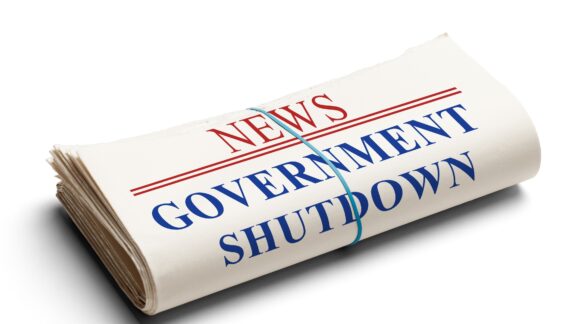There are two main areas in which Congress can enact meaningful reform. The first is to rein in regulatory guidance documents, which we refer to as “regulatory dark matter,” whereby agencies regulate through Federal Register notices, guidance documents, and other means outside standard rulemaking procedure. The second is to enact a series of reforms to increase agency transparency and accountability of all regulation and guidance. These include annual regulatory report cards for rulemaking agencies and regulatory cost estimates from the Office of Management and Budget for more than just a small subset of rules.
In 2019, President Trump signed two executive orders aimed at stopping the practice of agencies using guidance documents to effectively implement policy without going through the legally required notice and comment process.
Featured Posts

Blog
The hidden growth of government in an age of less red tape
Recent editions of Ten Thousand Commandments detail how regulatory red tape mushroomed under Biden. For vulnerable small business, the Small Business & Entrepreneurship Council…

Blog
The week in regulations, shutdown edition: Pot gear and hot air fuel
Venezuelan democracy activist Maria Corina Machado won the Nobel Peace Prize. The partial federal shutdown meant there were no proposed regulations and five new regulations…

Blog
Shutdown? Take the win
Last-ditch negotiations are underway as another fiscal year comes to a close on October 1. It’s that familiar crossroads: a threatened shutdown if a funding…
Search Posts
Study
How to Make Sure Reformed #NeverNeeded Regulations Stay That Way
Policy makers at all levels of government have waived more than 600 regulations in response to the COVD-19 crisis.[1] Those rules were…
Blog
The E.O. 13891 Guidance Document Portal: An Exercise in Utility
Federal agencies have been required by Executive Order 13891 to create “a single, searchable, indexed database that contains or links to all guidance documents in effect.” Agencies…
Blog
This Week in Ridiculous Regulations
The USMCA trade agreement came into effect on July 1, and three states increased their minimum wages. The unemployment rate went down to 11.1 percent.
Blog
Trump’s Regulatory Reform Agenda by the Numbers, Summer 2020 Update
The administration released the Spring 2020 Unified Agenda of Federal Regulatory and Deregulatory Actions. Its purpose is to lay out regulatory priorities of the federal…
Forbes
How Donald Trump Has Cut Regulation – But Also Added It
Spending control and deficit restraint are indispensable to a nation’s stability and long term economic health. Before the economic lockdown, federal debt service was already…
Blog
This Week in Ridiculous Regulations
Consumer spending rose 8.2 percent in May, a new record that gives hope for a quicker economic recovery. On the other hand, new coronavirus cases…
Staff & Scholars

Clyde Wayne Crews
Fred L. Smith Fellow in Regulatory Studies
- Business and Government
- Consumer Freedom
- Deregulation

Ryan Young
Senior Economist
- Antitrust
- Business and Government
- Regulatory Reform

Fred L. Smith, Jr.
Founder; Chairman Emeritus
- Automobiles and Roads
- Aviation
- Business and Government

Sam Kazman
Counsel Emeritus
- Antitrust
- Automobiles and Roads
- Banking and Finance

Marlo Lewis, Jr.
Senior Fellow
- Climate
- Energy
- Energy and Environment